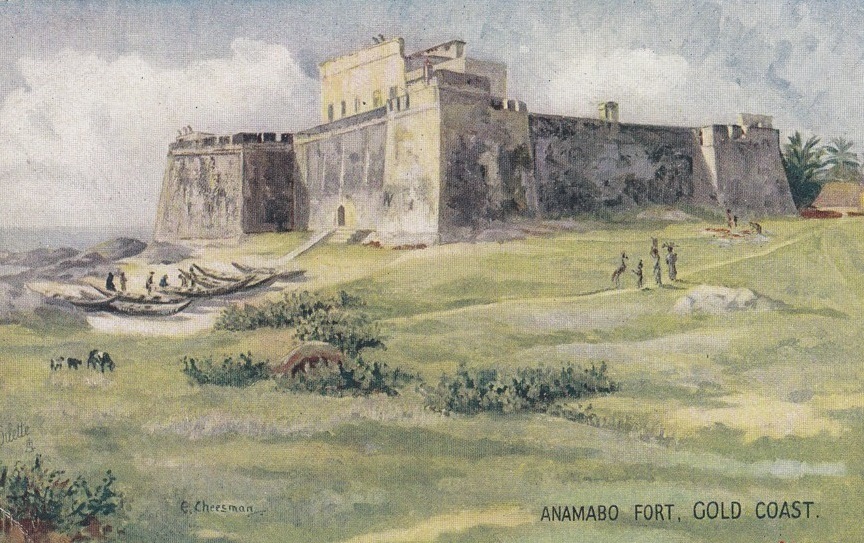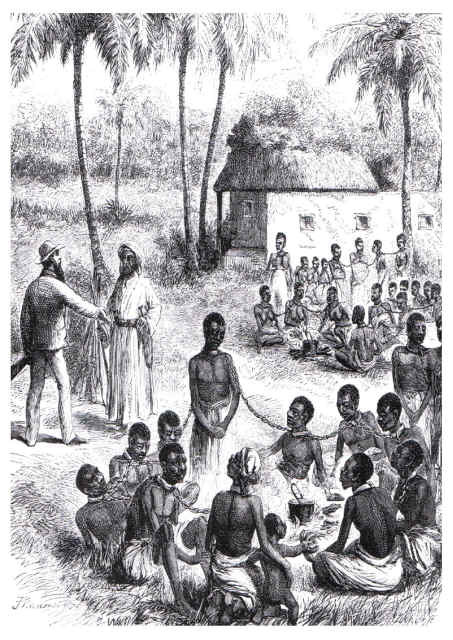Slave Trade Significance
At its peak in the mid-18th century, Fort William processed more enslaved Africans annually than any other British fort in West Africa, including Cape Coast.
It served as a central hub for the trade in:
Enslaved people from the Asante-Akan wars
Captives from inter-ethnic raids in the interior
Debt slavery and judicial enslavement from local communities
Anomabo was effectively a slave entrepôt, where local African traders (especially from Asante, Denkyira, and Akyem) sold captives to British merchants in exchange for firearms, cloth, gunpowder, and alcohol.
The strategic importance of Anomabo was not limited to trade — it also became a military flashpoint, especially in the events surrounding the Fante-Asante-British war of 1806.
What Happened?
Two Assin chiefs, from the area north of the Fante lands (and traditionally vassals of the Asante), sought refuge under British protection at Anomabo after fleeing from Asante authority.
The Asantehene (King of Asante), then Osei Bonsu, saw this as a direct challenge to his sovereignty.
When the Asante sent envoys to negotiate, they were reportedly murdered and their bodies desecrated — including graves of Asante nobles being defiled in a grave act of cultural and political insult.
The Asante saw this not just as an act of war, but as a deep spiritual violation.
The Resulting War
In 1806, the Asante army marched south, confronting both the Fante Confederacy and their British allies stationed at forts like Anomabo.
Although the Asante failed to capture the coastal forts due to their lack of naval power and European fortifications, they defeated the Fante in open battle, solidifying Asante supremacy inland.
This war was not only political, but also deeply economic: control over coastal trade routes (including the slave trade) was central to Asante ambitions.
Legacy and Current Status of Fort William
Today, Fort William still stands in Anomabo, though it receives far less attention than it deserves. While some restoration work has been done, it is not as developed as Cape Coast or Elmina Castles in terms of tourist infrastructure — but this adds to its raw historical gravity.
Why Visit Fort William?
Learn about Britain’s deeper involvement in the slave trade beyond Cape Coast
Explore massive slave dungeons and storage rooms
Understand the Fante-Asante-British power dynamics
Reflect on the less commercialized, more authentic atmosphere of a town still grappling with its past
Reflections and Importance
Fort William reminds us that the slave trade was not confined to a few famous castles. It was a systemic enterprise, integrated into the politics, warfare, and economies of both African kingdoms and European empires.
It also reflects the internal African political complexities — including:
Power struggles between African kingdoms
Alliances and betrayals with European powers
Conflicts between tradition and survival
The events of 1806 — involving murdered envoys, defiled ancestors, and a major Asante invasion — show that the slave trade was not just about economics. It was also about honor, politics, diplomacy, and the fight for sovereignty.
Why Fort William Should Not Be Forgotten
Fort William at Anomabo deserves to stand alongside Elmina and Cape Coast as a core monument of remembrance. Its role in the slave trade, its centrality in British colonial policy, and its place in the violent confrontations between powerful African states make it one of the most important heritage sites in Ghana and West Africa.
As Ghana continues its efforts to confront and present its past through tourism, truth-telling, and reconciliation, Anomabo should not remain in the shadows.

